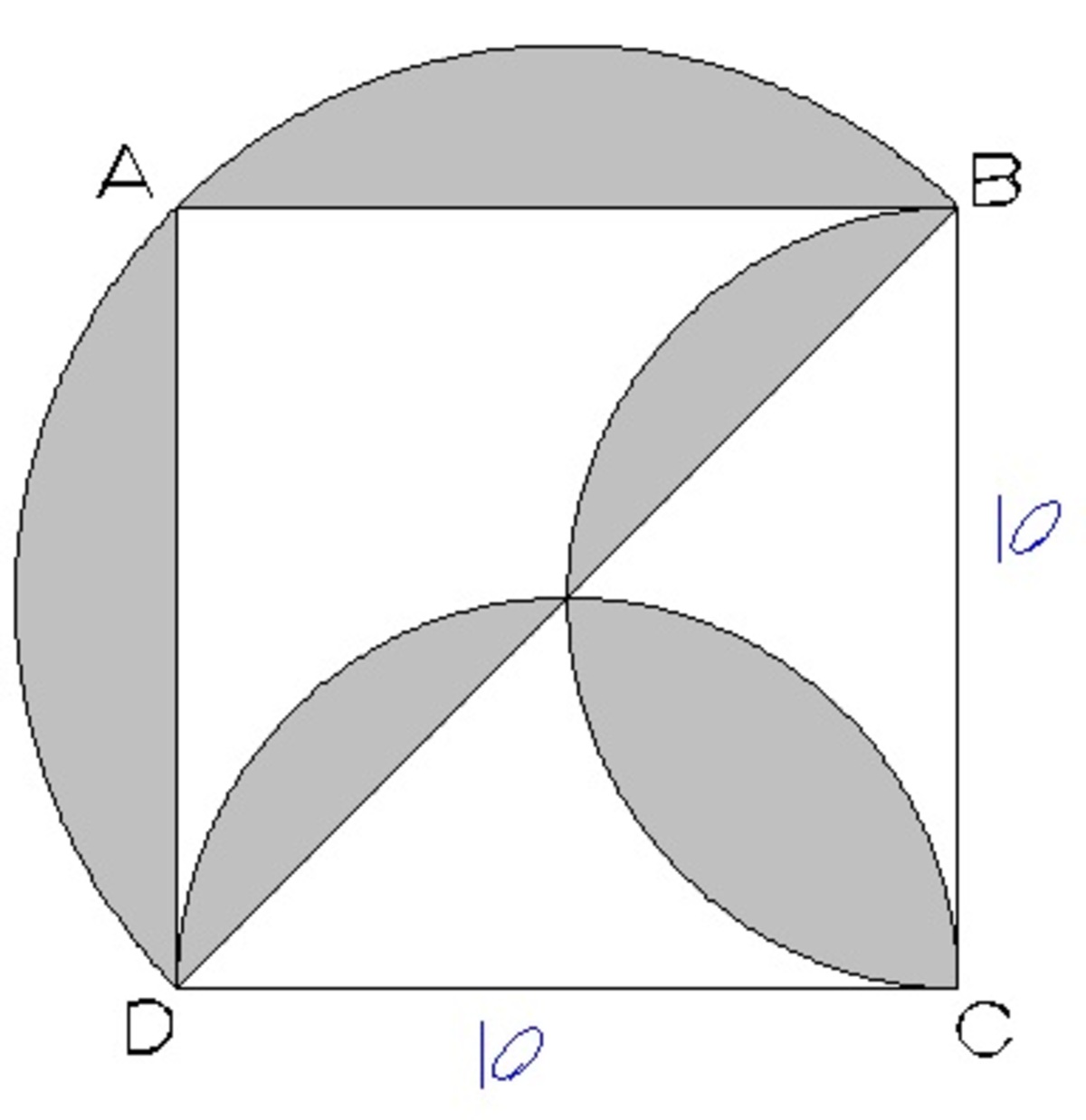A geometry problem by A Former Brilliant Member
 Shown in the figure above is square
with side length of
. Three semicircles are drawn with
and
as the diameters. What is the area of the shaded region?
Shown in the figure above is square
with side length of
. Three semicircles are drawn with
and
as the diameters. What is the area of the shaded region?
This section requires Javascript.
You are seeing this because something didn't load right. We suggest you, (a) try
refreshing the page, (b) enabling javascript if it is disabled on your browser and,
finally, (c)
loading the
non-javascript version of this page
. We're sorry about the hassle.
2 x = 2 1 ( π ) ( 5 2 ) 2 − 2 1 ( 1 0 2 ) = 2 5 π − 5 0
Let y be the area of segement D O . By symmentry segment D O is equal to segment O B . Let z be the area of the region in the diagram. By symmetry, z = 2 y .
y = 4 1 ( π ) ( 5 2 ) − 2 1 ( 5 ) ( 5 ) = 4 2 5 π − 4 2 5
The area of the shaded region is
A s h a d e d = 2 x + 2 y + z = 2 x + 2 y + 2 y = 2 x + 4 y
A s h a d e d = 2 5 π − 5 0 + 4 ( 4 2 5 π − 2 2 5 ) = 2 5 π − 5 0 + 2 5 π − 5 0 = 5 0 π − 1 0 0
Note:
2 x is equal to the area of the semicircle with diameter of D B (or radius of O D ) minus the area of triangle A B D .
y is a segment of a circle. It is equal to the area of quarter circle with radius 5 minus area of triangle D O E .
If we combine segment D O and segment B O , it forms region z .